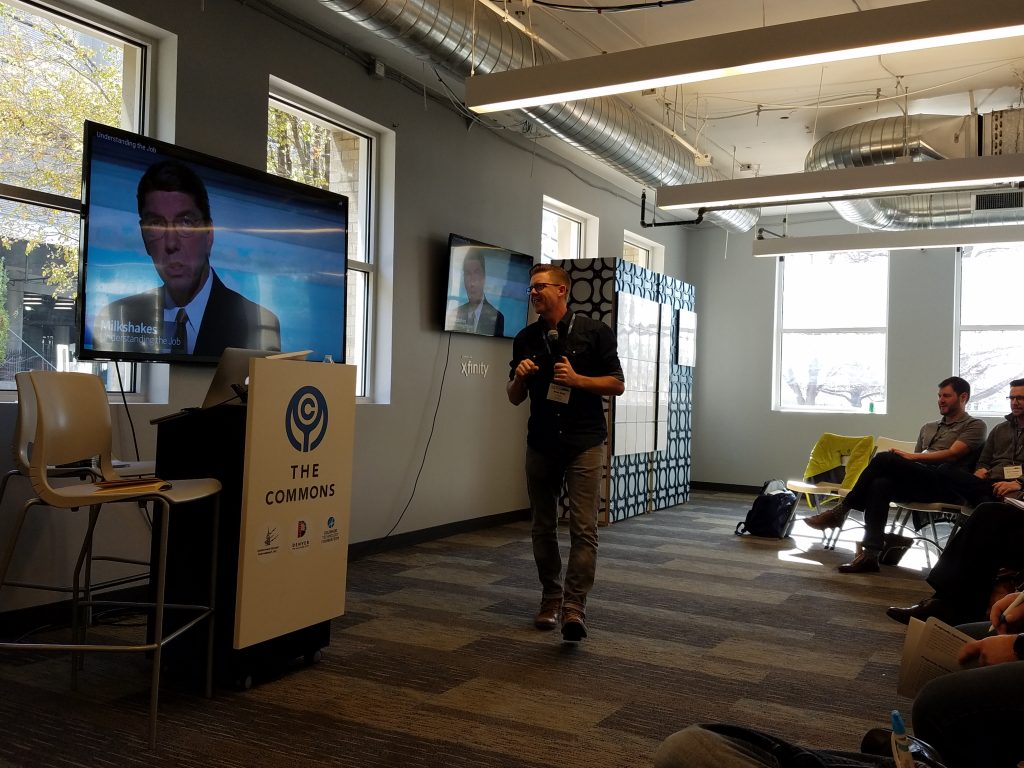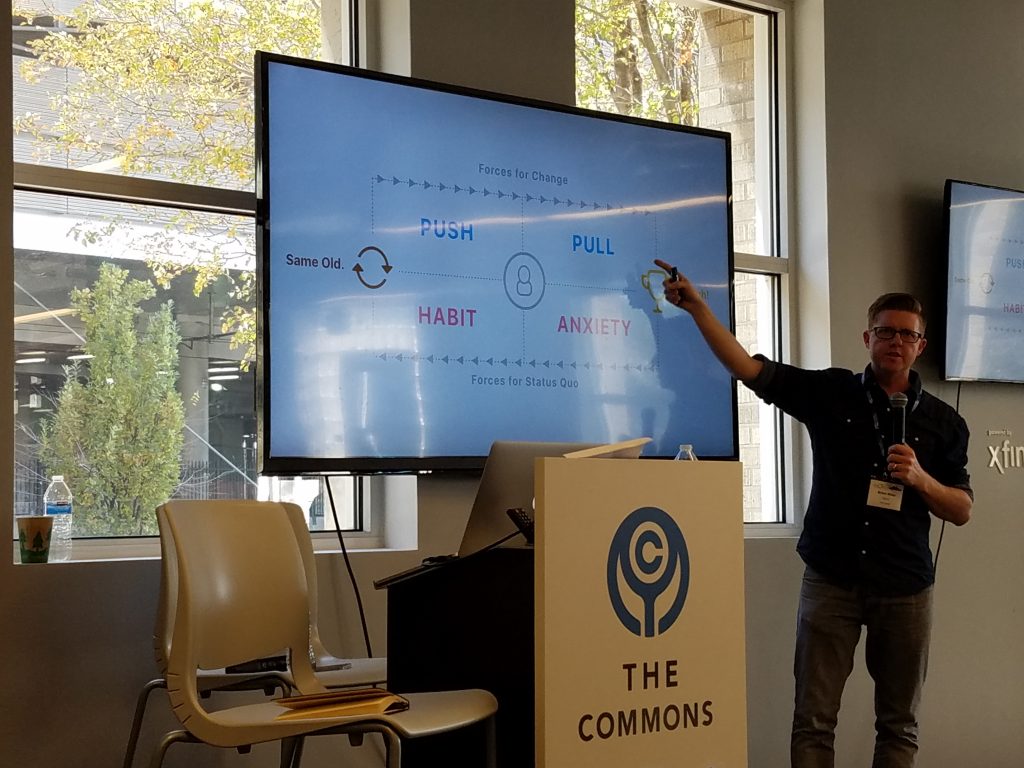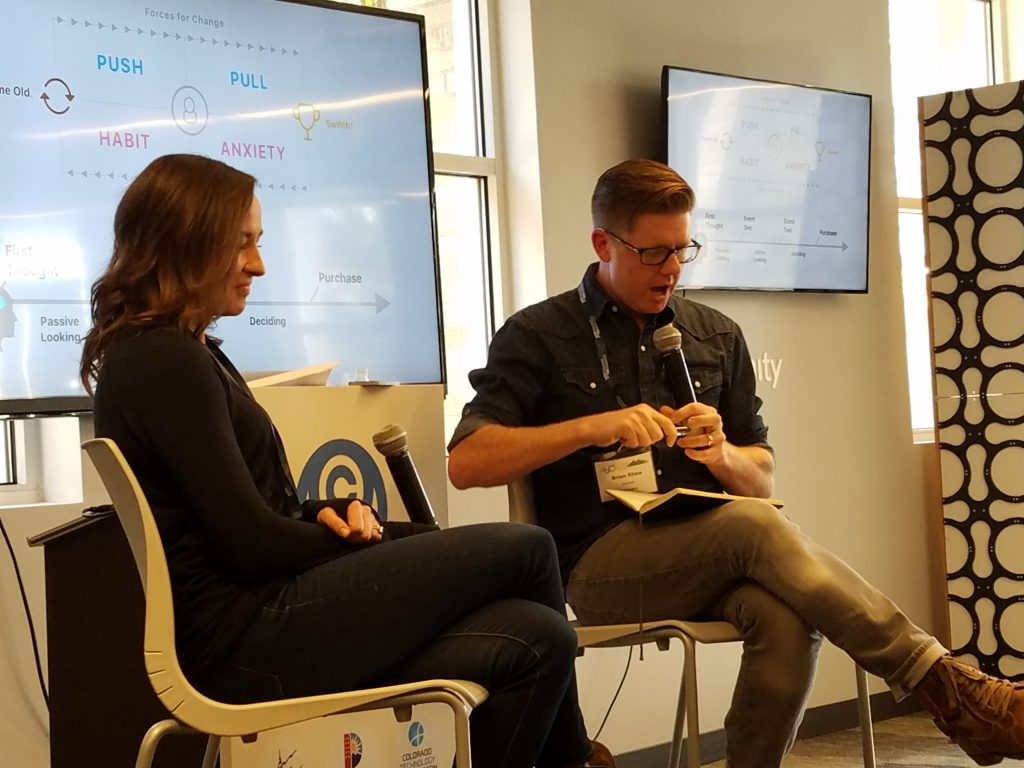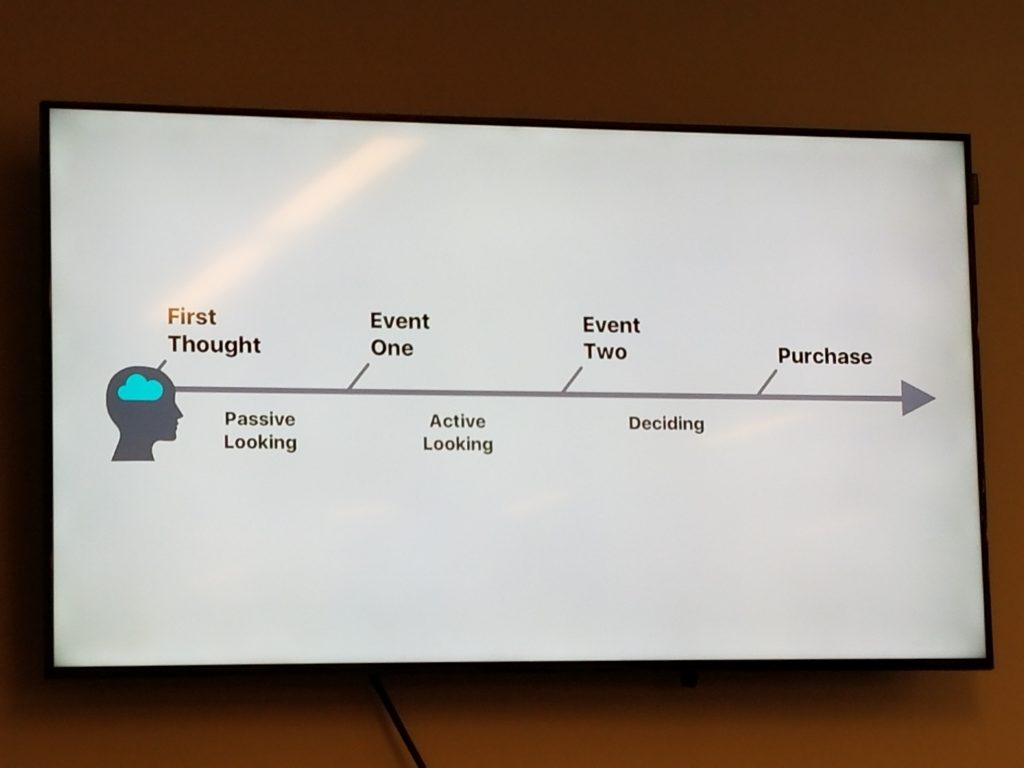The next session I chose at the Rocky Mountain Product Camps is around using a Jobs to be Done interview to understand the needs of your customers. This session was led by Brian Rhea and the point is to give us a working knowledge of jobs to be done. The premise is that customers do not buy products, they buy the thing that the product does for them (value or the capability). The execution of that job helps them make some progress in their lives and provides value to them.
He used a milkshake example. Why do people actually “hire” the milkshake to make progress in their lives? It was more about keeping occupied in a car for a long commute than actually about wanting a milkshake. The job to be done was therefore keeping occupied in the car – and the milkshake is one way to fulfill the job.

In product you need to figure out what to build, what to kill, what to change. If you can get to the actual jobs to be done by your customers, you will be better at doing all of these things. And a lot of this is just listening skills (the best sales people are the ones that hardly talk). You need to find out WHY somebody wants something, and this is where you find sustained or disruptive innovation.
Customers are experts in their needs, not solutions. They may not know how to design it. This dovetails in to the demand thinking concept (demandthinking.com) and the Basecamp case study. When Basecamp launched, all of their users asked for a calendar feature, but they wouldn’t build this because the customers were asking for a solution, not explaining what they actually needed. The founders sat down with customers and and determined that all they really wanted was a heat-map of resource availability that they could use for planning. It turns out that needs don’t change much and jobs don’t change much over time. However, how we solve these over time is what changes rapidly.
Interview tools – forces of progress and timeline. Forces of progress is a mental model used during the interview to move things along. If Push + Pull is greater than Habit + Anxiety, then you will get a new behavior. Habit and anxiety are two very hard things to overcome.

You can be stuck in the middle due to habit for a while, where you hear of a new thing, but you are anxious to change. If the alternative does enough to relieve your anxiety and there are enough good things, you will switch. As you are unfolding the story about the dynamics of these forces, these are where the opportunities for innovation are going to be found.
You can also focus on Push and Habit – which is customer retention and stickiness. Another word for habit is customer loyalty. You can also look at Pull and anxiety, which is customer acquisition. Concierge onboarding for example is a strategy laser-focused on overcoming anxiety.
The technique Brian recommends we use to do the interview is to literally draw a timeline in the middle of a sheet of paper that looks something like this:
The user moves through passive looking, to active looking, to deciding (buying). When you conduct a jobs to be done interview, this is a solid framework for the gaps you are trying to fill in. For more info, look up the Re-Wired group which has done a lot of research and consults in the area of job to be done.
The interviews Brian conducts are typically 40 minutes, and done with a partner – to help fill in the downtime while one person is scribing.
He then conducted a live interview with an audience member on a recent purchase she made for 20 minutes and we watched it unfold. Kim recently purchased some expensive hiking points, and Brian started by asking her to describe the purchase further – she bought Asolo leather hiking boots for $300 at REI. He then asks her which one, and how often she visits it (Platt, once a month), and which day she bought it (Tuesday of last week on an overcast day). Asks her whether she considers herself an outdoor enthusiasts – someone. Were they running a sale? No. He asks her to describe her journey in the store – and she knew exactly what she wanted, but had to work with an employee to try on a few sizes.

Prior to going in to the store, she did research online to determine exactly what she wanted. Brian dug in to this. She described that she needs to know the technical reviews as well as the normal user reviews. She mentioned she had been researching this for months prior to making the purchase. She climbed Mt. Kilimanjaro in trail runner shoes and decided that for her next week, in two weeks time, she wanted proper shoes when she treks through Columbia. She didn’t like the heaviness of regular boots so lightness was a key feature for her – especially for making the airport journey more comfortable. Online, she used a website which ranked boots on a bunch of criteria (durability, weight, waterproof comfort, etc.). The way they look mattered a lot also, so she discounted a few higher ranking brands. She liked leather and not feminine.
Brian explored substitute products and other pre-purchase steps she took – such as just using heavier socks with her current boots, or borrowing a friend’s boots to try them out. The answer was no. She did try on a few other boots when she was in the store, but she still didn’t like them. Adjusted the size and brought in the socks she was going to wear to get the fit correct. Once she found the the fit, it was a done deal.
He then decomposed his interview into the categories of Push/Pull, Habit/Anxiety.
How to be successful in your interview?
- Assure the interviewee that it’s low stakes and take the emotion out of it
- Search for the emotional energy
- Play dumb, ask probing questions to fill in gaps
- Retell it wrong on purpose to clarify
- Thank them for their time
- Do a debrief
He left of with a few resources we can check out later to get more information and help. All in all a very useful and practical session!
